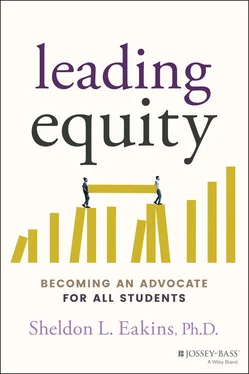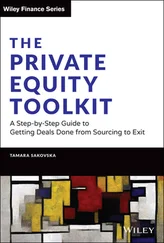Educators often ask me for ways to address/intervene when we witness bias taking place. Here is a list of sentence stems and conversation starters that will empower educators to discuss implicit bias with students and colleagues. While it is crucial to confront biased behavior, discrimination, and racism, these conversation stems are not intended to force conversations, but rather, they are designed to invite productive engagement between individuals.
Initiating Conversations About Implicit Bias
Use these conversation starters to proactively start a dialogue about implicit bias when there is no specific behavior or harm to be addressed.
Are you willing to have an honest dialogue with me about… ?
This question empowers the other person to consent or decline, based on their assessment of their readiness to engage productively.
It's important to me that we discuss…
This statement prioritizes the conversation as something that matters to you personally. It conveys to the other individual that if they respect you, they also should treat the discussion with respect.
Challenging Implicit Biases
Use these conversation starters after an individual has made a statement that conveys implicit bias.
I have a different perspective. May I share it with you?
This response does not indict the individual or tell the other person that they are wrong. However, it does cue the other person in that you are going to share something that may be in opposition to their beliefs. This conversation stem invites the other person to listen if they are ready or decline if they are not.
Can you tell me why you feel that way?
This response prompts the individual to dig beneath surface-level stereotypes or misconceptions and unpack the true nature of their feelings or beliefs.
Addressing Biased Behavior
Use these conversation starters after you have witnessed a person do or say something offensive.
When I saw/heard _____, I felt…
This statement begins with an objective observation before sharing your feelings. It does not presume that the other person acted intentionally out of malice and allows you to challenge their perspective.
Let's take a moment to consider how _____ might have felt when they saw/heard _____.
This conversation starter signals empathy, which is essential in conversations about implicit bias. It invites individuals to enrich their perspective rather than indicting them for their actions.
Use these conversation starters to begin sharing your own experiences with implicit bias.
In my experience, …
This statement centers on your lived experience and your truth. It encourages active listening rather than debate, as individuals engage with your narrative rather than defending their ideas.
As an individual who identifies as…
This statement connects you as an individual with a broader social group. It makes it less probable for the other person to classify you as an exception or not “really” a member of that social group.
Next, we will look at ways to recognize our privilege.
Recognizing Your Privilege
Let's move on to privilege. Like biases, we all have some form of privilege. There are so many kinds of privilege connected to an individual, even though sometimes, we just assume that “white privilege” is the only privilege out there. For example, I am a male, so I have male privilege. I am also Christian, which results in me having Christian privilege. I'm able-bodied, and I'm heterosexual, both privileges that equate to benefits that I have in society, which I didn't necessarily earn or ask to have.
However, these privileges benefit me nonetheless, and I must reflect upon this fact and acknowledge that some people don't have the same privileges that I enjoy. Our realities will be different because of that. Therefore, we must keep in mind that there are things that we experience that maybe our colleagues and students don't share or things we must think about that maybe our colleagues and students don't have to consider.
Now, when we're thinking about conversations about race and ways to facilitate them, we must put our biases aside and acknowledge that we are coming from our own place of privilege. We must reflect on that before we have these conversations with our students because when we try to navigate discussions through our own experiences without considering the experiences of others, the talks won't be nearly as impactful.
The bottom line is that we all must acknowledge that we have those biases. We must acknowledge that we have privileges. Then, we can use those as stepping-stones to further discussions about race and ethnicity with our students.
Preparing the Ground: Self-Reflection
The journey to fostering an equitable learning environment requires you to examine your own assumptions, biases, and positioning. Start with looking into understanding your own cultural identity. Self-reflection helps establish a method of internal investigation into why you became an educator and what the values are that you have for your students. After a deep reflection on your own perceived identity and assumptions, consider taking the Implicit Association Test (IAT) at https://implicit.harvard.edu/implicit/education.html. The IAT measures attitudes and beliefs that people may be unwilling or unable to report. It may be difficult, but we must be able to see what experiences contributed to our current view of the world.
Always remember that everyone's experiences are different.
Here are some questions to ask yourself:
Who am I as an educator and as a cultural being?
What are my assumptions, and what are my beliefs?
How do those beliefs and assumptions impact the way I view people who are different than me or the same as me? How do those beliefs and assumptions influence the way I interact with students, families, and their communities?
If you want to create a safe and productive environment, use these reflection questions to consider how effectively your current beliefs impact equity in your school. Keep in mind that self-reflection is an ongoing learning process of self-awareness and self-identity. Identify at least one accountability partner to help you with recognizing some areas in which you can focus on your teaching methods. The knowledge that you have about yourself informs what you believe and what you do. Furthermore, your behaviors and the things you do in the classroom inform what students believe about themselves and each other.
We all have biases, and we make judgments about others. Some of the biases are racially based on stereotypes and result from a lack of understanding of groups and cultures. It's okay to have biases because they are a natural part of who we are. The key is to recognize those biases and reflect on how to overcome them to establish a learning environment in which you have high expectations for all students regardless of your perceived knowledge of their abilities and backgrounds.
Keep in mind that the information you receive about groups of people because of how they are represented or not represented in the news, media, and books influences all of us. From a teacher's perspective, that is part of the society that is inundated with generic messages about groups of people; those messages tend to be most harmful to students of color.
Again, develop self-awareness of your biases toward your students and work to overcome them. Do not view a student's abilities from a deficit lens or associate students with labels (stereotypes, socioeconomic status, gender, or race). Those terms are labels that society uses to tell you a student is incapable of meeting high standards. Instead, view your students' backgrounds, culture, and abilities as assets to help them thrive in their learning.
Читать дальше












